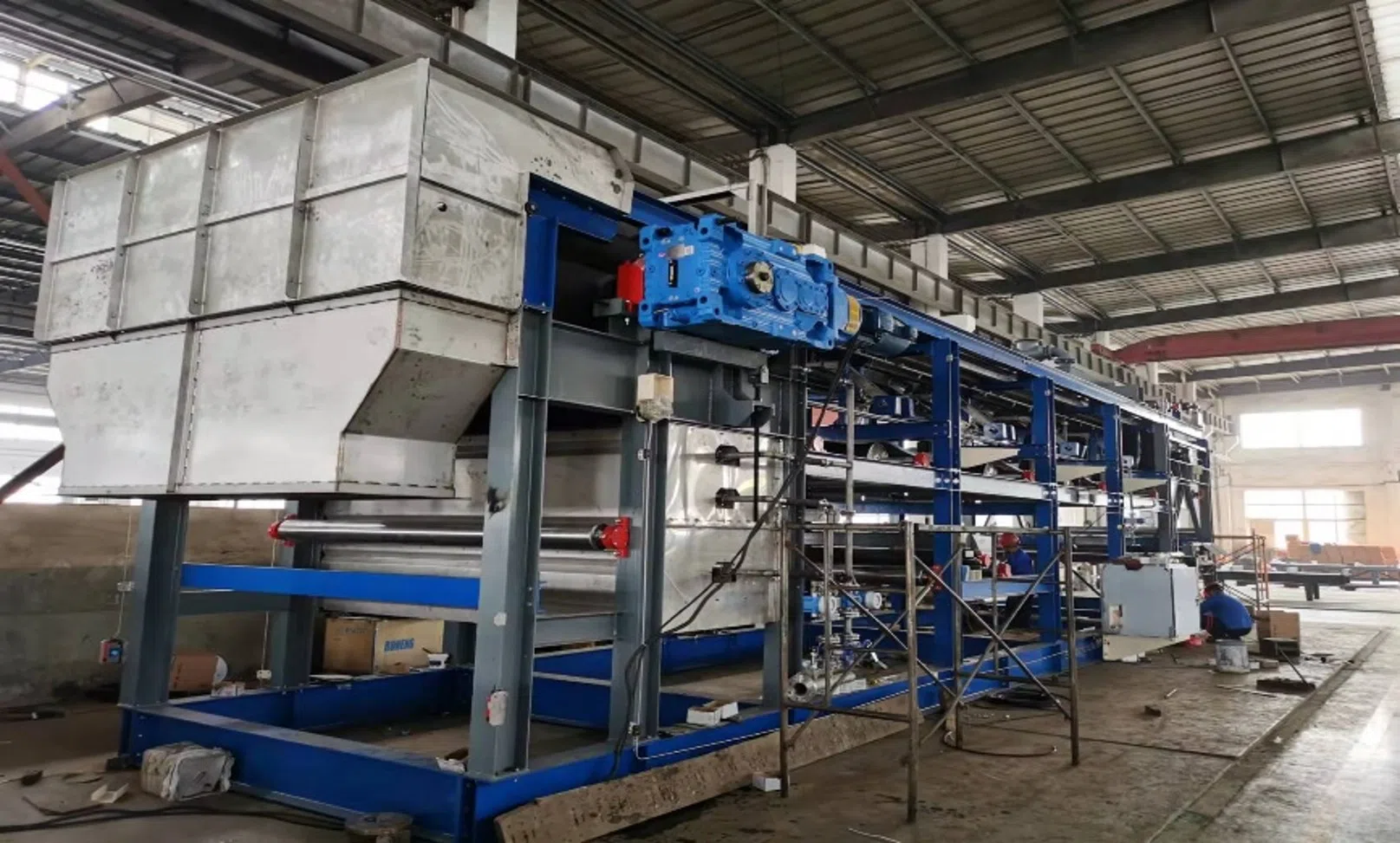Think about your morning coffee or the bread on your table. These everyday items rely on healthy crops, and those crops depend on phosphate fertilizers to grow strong. Phosphate fertilizers play a vital role in global food security, feeding billions by enriching soil with essential nutrients. At the heart of this chain sits phosphoric acid, the key raw material for these fertilizers. Without efficient phosphoric acid production, agriculture worldwide would struggle to keep up with demand.
However, companies in this field face a tough reality: the filtration step in making phosphoric acid uses lots of energy and resources. How can we get more value from each stage, cut costs, and boost output? That’s where belt vacuum filters step in. If you’d like to learn more about it, keep reading!
Filtration Challenges in Phosphoric Acid Production
Producing phosphoric acid involves breaking down phosphate rock with sulfuric acid. This creates a slurry. The slurry must be filtered to separate valuable acid from solids like phosphogypsum. It’s not easy. Every step needs careful work to avoid delays or lost product.
Stringent Requirements in Key Process Stages
Filtration in phosphoric acid production must handle steady flows without stopping. The equipment has to keep a constant vacuum pressure. This ensures good solid-liquid separation. Washing efficiency is crucial too. Proper cake washing removes dirt from the filter cake, giving clean phosphoric acid. The cake’s moisture should stay low, ideally below 20-25%. This cuts energy use in later drying.
If one part fails, the whole process slows down. For example, in wet-process phosphoric acid, the dihydrate stage needs filters that handle large volumes. They must keep the cake thickness even for consistent washing. These demands push the equipment hard. A small drop in performance can raise costs or lower quality.
Limitations of Traditional Filtration Methods
Older systems, such as disc filters or basic vacuum filters, often fall short here. Disc filters, for example, rotate to separate solids but struggle with sticky slurries in phosphoric acid setups. They clog easily, leading to frequent stops for cleaning. Traditional vacuum filters might lack the continuous operation needed for high-throughput plants, causing batch-like interruptions that waste time.
In mining filtration, where phosphate rock gets concentrated, old methods lose fine particles, cutting recovery by up to 10-15%. These shortcomings add up, from higher maintenance to uneven cake washing that leaves behind valuable acid.
Resource Loss and Environmental Pressures
Lost resources hit hard in this industry. Inefficient filtration means phosphoric acid gets trapped in the cake, sometimes wasting 5-10% of the product. That translates to millions in lost revenue for large plants. Additionally, the production of phosphoric acid generates fluorine-containing waste gases, phosphorus-containing wastewater, and phosphogypsum solid waste. If improperly managed, these pollutants can cause comprehensive environmental contamination of air, water bodies, and soil.
Today, regulations in places like the EU demand better treatment to cut pollution. Plants face pressure to recover more while using less water and energy. Without advanced continuous vacuum filtration, these goals slip away, raising operational headaches.
How Belt Vacuum Filters Cut Costs and Boost ROI
Belt vacuum filters address these pains head-on. They use a moving belt to filter slurries continuously, pulling liquid through under vacuum while solids form a cake that’s washed and dried. NHD’s horizontal belt filter stands out with its rubber belt design, tailored for tough chemical environments.
- Principle of Continuous Operation: The horizontal vacuum belt filter continuously separates solids and liquids as slurry moves on a porous belt over vacuum boxes. The belt’s grooves and holes ensure smooth drainage, preventing buildup. NHD enhances this with features like multi-stage flow-guide and heat preservation vacuum boxes that reduce scaling. The large stroke tension device keeps the belt aligned, minimizing deviations that could halt production.
- Boosting Production Efficiency: The belt vacuum filter greatly improves phosphoric acid production. It handles up to 100 t/h in large models, keeping cake moisture low. NHD’s smart spray system uses multi-stage washing. This cuts the workload by 30%, based on real plant data. The stable support of the rubber belt filter prevents filter cake breakage. It ensures even cleaning, allowing 24/7 operation. This boosts output and reduces breakdowns.
- Reducing Operating Costs: Costs drop in several ways. First, energy use falls thanks to scale-free vacuum systems that resist clogging. Maintenance? Easier with modular frames that disassemble quickly. NHD’s simplified design halves repair needs, reduces water use through efficient countercurrent washing, and improves drainage with precision grooves, lowering vacuum power consumption.
- Maximizing Resource Recovery: Recovery is where belt vacuum filters shine. Thorough cake washing as the machine recovers more phosphoric acid from the slurry. NHD’s specialized scrubbers restore cloth permeability, keeping air flow high for better separation. In tests, this boosts acid recovery by 5-8%, turning waste into profit. For phosphogypsum treatment, it ensures cleaner solids, easing environmental compliance.
Belt Filter Applications in Phosphoric Acid Production
The versatility of horizontal vacuum belt filters makes them fit for multiple steps in phosphorus chemicals. From rock processing to waste treatment, they are suitable for wet acid methods such as semi-water, di-water, semi-water-di-water, di-water-semi-water, as well as for harmless treatment of phosphogypsum.
- Beneficiation &Concentration of Phosphate Rock: Starting upstream, in mining filtration, the belt vacuum filter concentrates phosphate rock slurry. It removes water efficiently, delivering concentrate with stable moisture—around 15-20%—ready for acid digestion. This step ensures consistent feed to phosphoric acid units, avoiding fluctuations that disrupt production.
- Precise Separation of Phosphoric Acid Slurry: At the heart of the process, a horizontal belt filter separates phosphogypsum from the acid slurry. Its continuous operation handles crystal-heavy mixes. Multi-stage washing achieves pH levels under 2 for high purity. Meanwhile, as a cake washing machine, it excels at removing impurities, yielding clearer acid and drier cake.
- Environmental Treatment of Phosphogypsum: For by-product management, rubber belt filters dewater phosphogypsum piles effectively. This cuts volume by up to 25%. The thoroughly washed and dehydrated phosphogypsum has low impurities and good strength. It meets environmental standards, supporting safe storage or use as a building material, opening new value paths.
NHD Belt Vacuum Filters’ Global Practical Cases
NHD’s belt filter design is built on 30 years of vacuum filtration expertise in the phosphorus chemical industry. With over 1,000 rotary filters installed worldwide, it delivers superior filtration results. Let’s explore two outstanding case studies from NHD’s collaborations with Vietnam and Senegal. These cases show our technology in action, from Asia to Africa.
Vietnam’s National DAP Plant
At Vietnam’s DAP-VINACHEM plant, NHD’s 84m² belt vacuum filter transformed operations. Commissioned recently, it passed a 72-hour test, hitting all targets for washing efficiency and pH. This state-owned giant, producing 40% of Vietnam’s DAP, now enjoys cleaner production and better phosphogypsum handling. The NHD horizontal vacuum belt filter used in this case cuts energy use while boosting output, proving its value in large-scale fertilizer making.
Senegal Phosphate Rock Project
In Senegal, for INDORAMA ICS, NHD installed a 20m² horizontal belt filter—their first in mineral processing there. After site surveys and tests from 2019-2021, it met capacity and moisture goals on an existing framework. The client plans to replace three older units, impressed by the rubber belt filter’s reliability in tough conditions.
Conclusion
With over 200 patents and operations in over 50 countries, NHD sets the standard for chemical filtration equipment. It leverages deep expertise and proven global project experience. In today’s phosphoric acid industry, choosing an efficient filtration solution is critical. It’s key to gaining a competitive edge and sustainable growth.
NHD offers more than just horizontal vacuum belt filters; we’re the ideal partner for plants seeking maximum efficiency and true value. If you are in urgent need of vacuum filtration solutions, please contact us today at [email protected], and we will provide you with the best quality filtration products and customized solutions.




